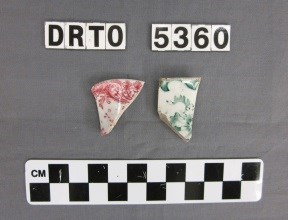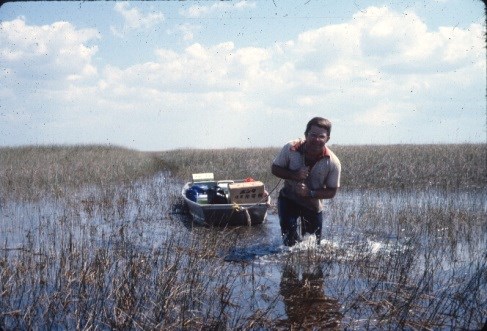South Florida Collections Management Center
Re:Collections
Summer 2013
NPS Web Catalog Update
The NPS has revamped the Web Catalog! Check out the new interface and find out what is in your collection at http://museum.nps.gov/ParkIndex.aspx

DRTO
Over the summer and as part of an internship, Kathryn Rohlwing, a recent graduate of Wake Forest University, completed cataloging of archaeological remains recovered during an excavation conducted at Fort Jefferson’s parade ground. The excavation, which was done as a Public Archaeology Week activity, was a collaborative effort between the National Park Service, the Southeast Archeological Center, the Florida Public Archaeology Network, and the Archaeological Society of South Florida. The excavation began on March 12th, 2009 and was completed on March 17th, 2009. A total of 6,121 historical artifacts were recovered. Findings include fragments of tobacco pipes, glass bottles, ceramic plates, nails and bullets. Items such as Minie Ball bullets and certain types of ceramics reflect Fort Jefferson’s Civil War Era occupation.

Archives in Action
This year the South Florida Collections Management Center has contracted with The DRS Group of Florida, Inc. to digitize and microfilm 30 linear feet of Records of the Everglades Science Program which were cataloged in FY 2012. Records identified for digitization and preservation microfilming include textual records, oversize documents and photographic materials. They include records created by Robert Fennema, Susan Ritter, Dan Scheidt, and Dave Sikkema pertaining to their hydrology research and modeling work. These individuals contributed to projects such as the Central and South Florida Project Comprehensive Review Study (Restudy), the Lake Belt Plan, the Phosphorous Dosing Study, also known as the Nutrient Uptake Study, the Big Cypress Turner River Water Management Plan, and the Experimental Water Deliveries Program. The high quality color digital images that the DRS Group has produced will aid with access to these records, while the microfilm will ensure long term preservation of these important hydrology resource management records.
Specimen Highlights
This summer an “assembly line” approach was used to catalog thousands of glass slides containing copepod specimens collected by Christina Bruno in 2001-2004. Steven Bedoya cataloged each slide, while volunteers Jean Schardt and Bob Gross applied permanent markings and placed in new storage cases. Copepods are a group of small crustaceans found in both salt and freshwater habitats. They live in a multitude of areas ranging from damp soil to marshes. They are part of the crustacean subphylum so they share many aspects with crayfish and water fleas. They have two body parts, cephalothorax and abdomen, consisting of ten legs for swimming and the other crustaceans. If there are a large number of copepods they are even able to kill a fish. The larva of copepods undergo 11 stages of maturation that spans between 1 week to 6 months depending on water conditions. In her studies by Dr. Bruno collected specimens from different orders and multiple sex and age. The studies consisted of reviewing copepod distribution and water conditions for multiple sites throughout Everglades National Park.
Last updated: March 28, 2024
